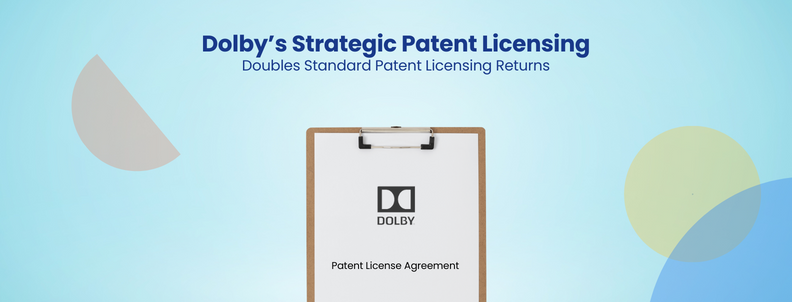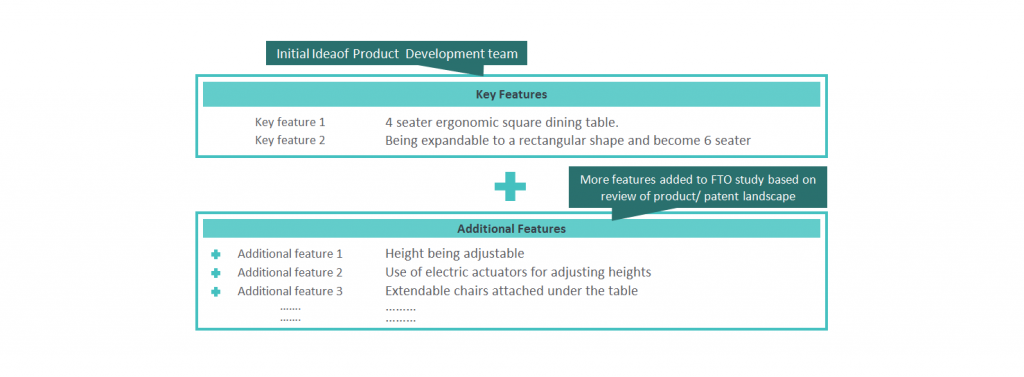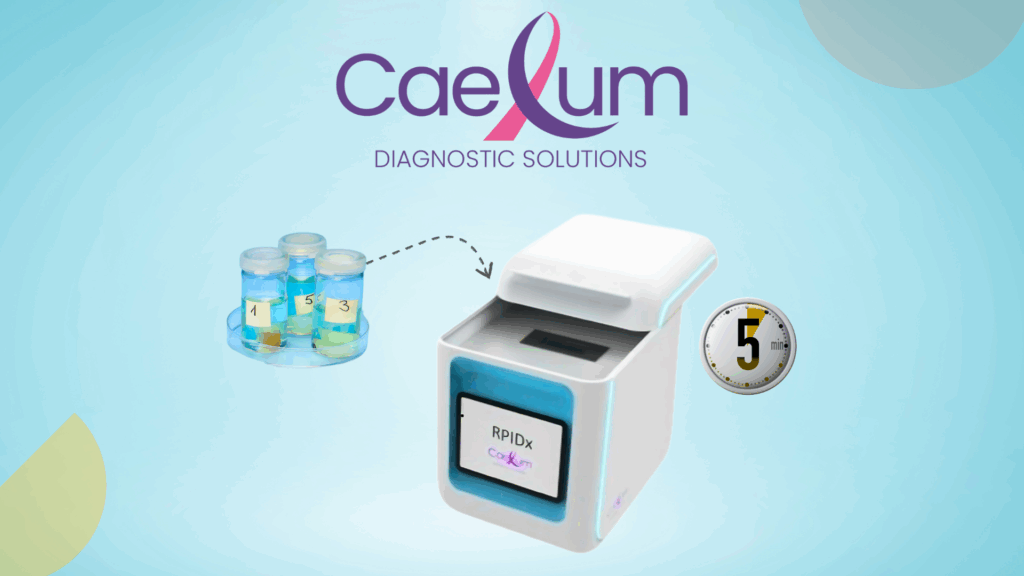Streaming crystal-clear 8K content on a phone without buffering, even on unreliable internet, is no longer a far-fetched thought. This seemingly magical experience relies heavily on the intricate video compression technologies developed by industry leaders like Dolby and JVC Kenwood.
Although this is commonly known, these companies are being highlighted in this case study for their innovations and their smart approach to maximizing their licensing returns from their patents. This article delves into Dolby’s strategic approach to patent licensing, specifically in the emerging Video Codec domain, revealing how a single patent can unlock revenue across multiple standards, including HEVC, VP9, and the cutting-edge VVC.
Strategic Patent Licensing To Double The Returns From a Single Patent
Protecting intellectual property with patents is crucial, yet it’s merely the beginning of a longer journey. Many companies face the challenge of managing patent portfolios that don’t live up to their potential, where groundbreaking inventions don’t generate the expected revenue.
Imagine a company that, in the early 2010s, developed a pivotal video compression technology and secured it with a patent. By joining the patent pool for the HEVC standard and strategically contributing their patent in 2013, they ensured a steady stream of licensing revenue from various industry stakeholders. As technology advanced, new standards like VVC emerged, which could make the original patent appear less relevant. Yet, it’s precisely at this instance that the opportunity to leverage existing patents within new standards becomes clear.
Sometimes, the fundamental innovation of the company’s patent retains its value, even in the context of new standards. By licensing its patent through the newer generation of video codecs like the VVC standard, the company not only sustains its relevance but also doubles the revenue potential from this single invention.
But the bounds of this strategy aren’t limited to generational development in the standard. The same patent may also find relevance in Video coding technologies like VP9, which was developed independently of the VVC/HEVC/AVC family of video codecs. By recognizing this opportunity, the company can further broaden its licensing scope, significantly increasing its revenue by participating in the VP9 pool as well. This multi-pronged approach exemplifies the power of going beyond individual standards, harnessing the wider relevance of inventions across diverse industries.
It’s a powerful way to maximize the value of a patent portfolio in an ever-changing technological world.
Case in Point: Dolby Laboratories’ IP Strategy Decoded
Dolby Laboratories stands as a prime example of this strategy. Take their patent, US10499058B2, which is related to video compression. By declaring it in both Sisvel’s VP9 Patent Pool and Access Advance’s VVC pool, they’ve secured licensing fees from companies implementing both VP9 and VVC standards.
VP9, introduced by Google in 2013, offers high-quality video without additional costs and is essential for platforms like YouTube. Here is a declaration of US10499058B2 (by Dolby) in Sisvel’s VP9 Patent Pool:
Source: Sisvel | Sisvel’s VP9 Licensing: Leading Video Codec
Eventually, VVC was launched in 2020, with the technology enhancing video compression, improving efficiency by 30% over its predecessor, HEVC. This advancement allows for high-quality, data-efficient streaming of 8K and virtual reality content akin to current HD streaming.
Understanding the core technology of VVC, Dolby understood that US10499058B2 could be declared in Access Advance’s VVC Advance pool:
Source: VVC Advance Patent List – Access Advance
When we did a high-level comparison of US10499058B2 with standard documentation of VVC and VP9, we found that the patent is actually relevant to both standards.
Here is a comparison:
| Subject Patent – US10499058B2 | Literature From VVC Standard | Literature From VP9 Standard |
| …a quantization parameter QP that determines a first step size for the first-bit depth, wherein the first step size equals 2(the bit depth−8)*QS8; and quantized digital symbols; wherein QS8 is based on 2QP/C, C being a non-zero constant. | The quantization parameter qP is derived…… The scaled transform coefficient d[ x ][ y ] is derived as follows: d[ x ][ y ] = Clip3( CoeffMin, CoeffMax, dnc[ x ][ y ] ) …dnc[ x ][ y ] = ( dz[ x ][ y ] * ls[ x ][ y ] + bdOffset ) >> bdShift …The scaling factor ls[ x ][ y ] is derived as follows: …ls[ x ][ y ] = ( m[ x ][ y ] * levelScale[ rectNonTsFlag ][ qP % 6 ] ) << ( qP / 6 ) Rec. ITU-T H.266 (V3) (09/2023) – https://www.itu.int/rec/T-REC-H.266-202309-I/en | 7.2.9 Quantization params syntaxThe residual is specified via decoded coefficients, which are adjusted by one of four quantization parameters before the inverse transform is applied.… base_q_idx indicates the base frame qindex. This is used for Y AC coefficients and as the base value for the other quantizers. VP9_Bitstream_Specification – https://storage.googleapis.com/downloads.webmproject.org/docs/vp9/vp9-bitstream-specification-v0.7-20170222-draft.pdf For DC coefficients, the mapping from quantization index to quantization step size for 8-bit, 10-bit, and 12-bit internal bit depth is specified by a lookup table Dc_Qlookup[3][256], and the mapping from quantization index to quantization step size for 8-bit, 10-bit and 12-bit is specified by a lookup table Ac_Qlookup[3][256]. Given the quantization step size, indicated as Qstep, the input quantized coefficients are further de-quantized using the following formula: F = sign * ( (f * Qstep) % 0xFFFFFF ) / deNorm https://aomedia.googlesource.com/aom/+/refs/heads/main/doc/AlgorithmDescription.md#Quantization // The model predicts bits as follows. // target_bits = bias – ratio * log2(q_step) // Given the target_bits, we compute the q_step as follows. double q_step; assert(rq_model->ratio > 0); q_step = pow(2.0, (rq_model->bias – target_bits) / rq_model->ratio); Vp9_encoder.c –https://chromium.googlesource.com/webm/libvpx/+/master/vp9/encoder/vp9_encoder.c |
We have discussed how some core technologies apply to both VVC and VP9 standards. However, the further development of VVC and VP9, or the introduction of new standards, could significantly affect the relevance of patents like US10499058B2 and related patents. These changes might be due to new features or substantially different approaches in the upcoming standards.
Talk to our experts to anticipate these shifts for long-term patent licensing planning.
Beyond Quantization: Shared Technological Innovations
While VVC targets advanced features like HDR and 360° videos, and VP9 focuses on accessible quality, both standards share common ground in fundamental technologies. These similarities provide a strategic advantage in intellectual property management, allowing companies to apply their patents across various video standards and make multiple-time ROI using the same set of patents. Other technologies can be common in both the standards, for instance:
Transforms:
Both utilize DCT/DST-based transform coding despite VVC featuring larger block transforms.
Source: VP9_Bitstream_Specification
Source: VVC Overview
Intra-prediction:
VVC has 65 angular modes vs. VP9’s 10 modes – but directional predictions are shared across both.
Entropy coding:
While VVC employs multi-rate coded arithmetic and VP9 utilizes Flex Probability Tables, their underlying entropy schemes exhibit similarities.
Partitions:
Quad-tree partition structures form the foundation for both standards despite VVC offering more flexible block partitioning.
Conclusion
This case study exemplifies the broader potential of multi-standard patent licensing for maximizing revenue. It further showcases how shared technological innovations between standards create opportunities for strategic patent application.
Companies like Dolby, which not only innovate but also adeptly position their patents across multiple standards, set the stage for future advancements.
Intrigued to explore similar multiple ROI opportunities in your patent portfolio?
Fill out the form below to get your patents evaluated for potential contributions to emerging or established standards beyond their initial domain.
Authored by: Shobit Agrawal & Swapnajeet Nayak, Patent Monetization Team
Edited by: Annie Sharma










